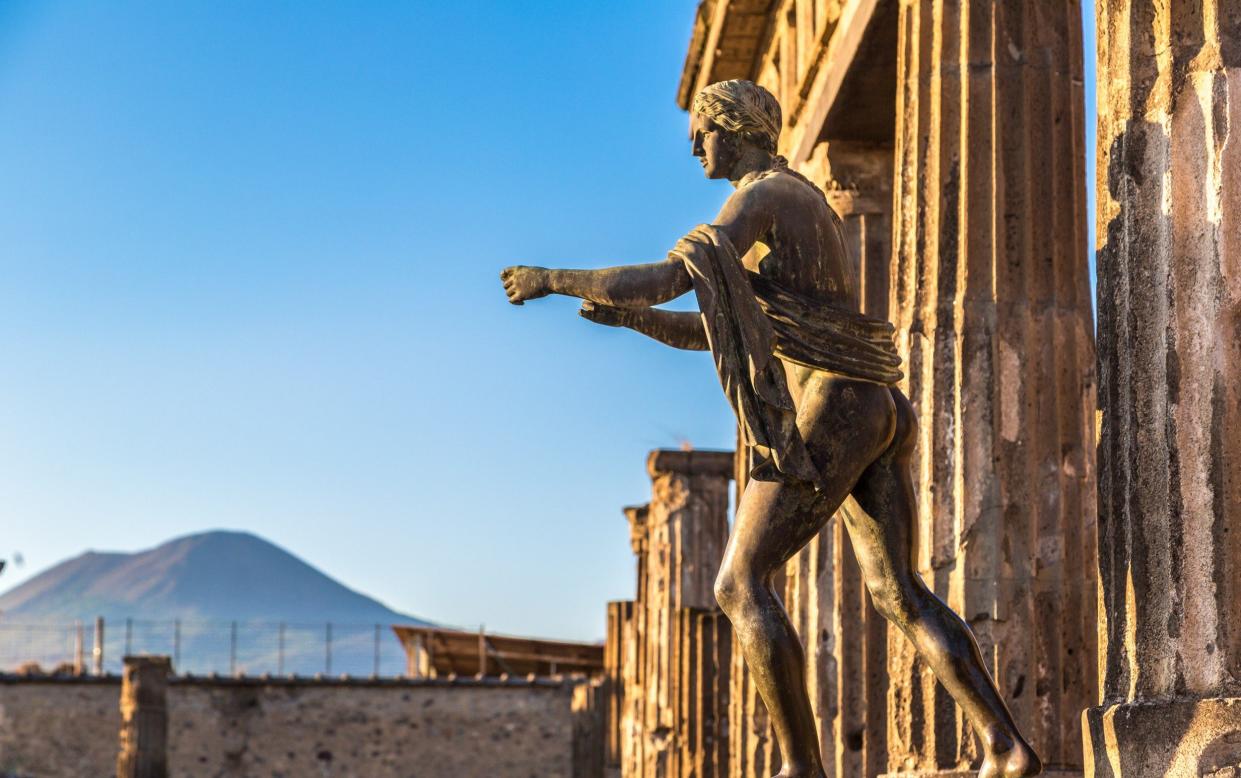A racy, pacy novel in the shadow of Pompeii’s annihilation

Lately, it seems as though everyone has been thinking about the Roman Empire. Elon Musk has been posting memes about it; men on TikTok claim it crosses their minds several times a day. But I doubt the Rome they think of looks much like the one Elodie Harper conjures in her superb new novel, The Temple of Fortuna.
Harper’s is not a Rome of stoical emperors and well-ordered legionaries. What matters here are personal ties, petty hierarchies, the porous line between enslavement and freedom, and the question of whether there’ll be enough money tomorrow for bread. Both visions of Rome hold elements of truth, but Harper’s surely runs closer to the empire as it was experienced by the majority of its citizens.
The Temple of Fortuna is the final instalment, and, I would argue, the best, in Harper’s Wolf Den trilogy. Our protagonist Amara has so far been a Greek doctor’s daughter, an enslaved whore in a Pompeiian brothel, the concubine of a spoilt rich kid and the lover of a slave. That would be more than enough metamorphoses for a single woman, but at the start of this book, we find her living with one of the wealthiest imperial freedmen in Rome, acting both as his mistress and his political spy. Events conspire to bring her back, with predictably terrible timing, to Pompeii in the October of AD 79.
While the first two books in the trilogy were set entirely in Pompeii, the third opens on the magnificence of Flavian Rome, giving Harper scope to exercise her talent for evoking historical place. In the imperial palace on the Palatine, “torchlight ripples over the marble floors and across the painted walls, illuminating the gold, making it look liquid”; in the slums of the Suburra, the apartment blocks lean “so close together they almost form an arch against the night sky”. Other spaces are pure imagination: in the dining room of a courtesan, the woman “appears to have been split in two… reclining on the couch opposite, while behind her another Saturia also reclines, this time as a painted version of Helen of Troy”.

Harper’s cast of characters is constructed from a similar combination of fact and fiction. Some of the people we meet – the scientific admiral Pliny the Elder with his “familiar air of restlessness”, the future despot Domitian – are well-known historical figures; others – the businesswoman Julia Felix, the baker Modestus – are real Romans known only from the mark they left on Pompeii; still others – Amara herself – have been invented entirely. Yet all are treated with the same observational empathy, making it easy to imagine that they form part of the fabric of a single society.
The disaster upon which Harper’s plot hinges – the eruption of Vesuvius – has been foreseeable from the moment The Wolf Den opened in Pompeii in AD 74, but when it comes, it’s still shocking. Harper doesn’t shy away from describing the eruption itself in a series of scenes that manage to feel both bracingly fast and horrifyingly slow. The Gulf of Naples, after the catastrophe, is transformed into “vast drifts of smoking ash”. Although an imperial relief effort is in progress, in a world where all records are burnable and buriable, people’s true identities may be past tracing.
The Temple of Fortuna is an apt title. For all that ancient Rome could be obsessed with status and hierarchy, it allowed, more than most contemporary societies, for occasional instances of extreme social mobility. The capacity for drastic shifts in fortune, both upwards and downwards – naturally redoubled in the wake of disaster – is everywhere in Rome’s history. Harper has seized on this: Amara has made it from the brothel to the imperial palace, but she has further to go before she finds her place. Part romance, part underdog survival story, The Temple of Fortuna – even when it verges on the implausible – pulls you along. This is a novel you can, and should, devour.
The Temple of Fortuna by Elodie Harper is published by Apollo at £16.99. To order your copy for £14.99, call 0844 871 1514 or visit Telegraph Books
